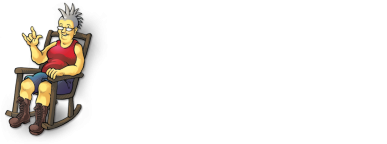It’s the Spring of 1986, and I’m wandering around Boston in the middle of a tough season — recent breakup, career not happening, future looking dicey — when I invest in a music magazine and read what has to be a good omen: The Monkees are getting back together.
Somehow this group always seemed to bring good karma along. It’s not easy loving a group with zero snob appeal. But I’d been growing up Monkee since September 1966, when their TV show premiered during the week of my ninth birthday. The Beatles by then were off in another universe, but The Monkees were the hipper, smarter big brothers you really wanted to have around; I related to the sensitive Peter Tork, while aspiring to be the above-it-all Mike Nesmith. I got my mom to make the Monkees’ recipes that turned up monthly in issues of 16 Magazine (and can assure you that Davy’s almond cookies, which consisted entirely of almonds, sugar and butter, were quite tasty). They even came to my emotional rescue with 1967’s Christmas episode, in which a sensitive introvert kid not unlike myself was welcomed into the group’s cheerful, by-now psychedelicized worldview.
The TV show turned out more subversive than anyone noticed at the time, and some of my own views on the media were shaped by the way The Monkees would interrupt a clichéd scene, walk down to the writers’ room and demand something groovier. I got my first taste of psychedelia from Mike Nesmith’s song “Daily Nightly” — a blurry, hazy but very alluring glimpse of the Sunset Strip after hours. The same album (Pisces, Aquarius, Capricorn & Jones Ltd. of course) offered a future glimpse of prog rock with “Star Collector” — with harmonies that soar while a synth goes playfully berserk, on a song about groupies no less! If this was grown-up life, I wanted more of it.
I forgot The Monkees through adolescence, but they re-entered my consciousness soon after I moved to Boston in 1980: I wandered into the Strawberries record store downtown and picked up the double LP Australian compilation “Monkeemania”; four sides’ worth of the best of those albums I’d thrown out years ago. That album helped me preserve a sense of fun in my post-graduate years, and that old connection would come in handy: as a budding music journalist I wore a Monkees T-shirt to one of my first band interviews, with the UK punk band 999, which led directly to my getting along with their singer (“Good song, ‘I’m a Believer’,” said the guy who’d written “Homicide”). I wore that same shirt to a lot of my early nightclub excursions—not so much at hub of the local rock scene, The Rat, where it would have been appreciated, but at holier than thou euro-trash hangout Spit, where it was my badge of anti-trendiness: Hey, I got your Tainted Love right here!
Somehow, the lads managed to show up whenever I needed uplifting. Soon after hitting town I bought one of my first Boston punk singles — “Knock Me Down,” by a scrappy little outfit called The Outlets — and found it paired with a cover of one of Nesmith’s best, “You Told Me.” Around that time I caught a screening of “Head” — The Monkees’ shockingly avant-garde film from 1968 — at the fledgling Off The Wall Cinema in Cambridge, a secret clubhouse of a place where you’d get some hot chocolate or smuggle in booze, settle back and watch some 15-year old film. On this night Head was shown in a double bill with the Batman movie from 1967, and I got to rub shoulders — literally, since there was no well-lit path to the restroom — with some of my newfound Boston rock heroes who were in the audience and tripped over a couple of Lyres on the way to refill my hot chocolate.
As it turned out, The Monkees’ 1986 comeback dovetailed nicely with my own. Since I was the only one who cared, I got to cover their various local shows — with a new date, thank you — for The Boston Globe, and report on how a nice little oldies tour got way out of hand. The tour started with the band playing to just 2,250 folks outside Boston at the South Shore Music Circus, but by the time it returned to the area, they found themselves playing to a sold out 70,000 seats or so at Foxboro Stadium; the tour now fuelled by major MTV exposure and a radio-driven rumor that Nesmith would show up onstage that night (I could have told you it wouldn’t happen: If you were Mike Nesmith, would you travel that far?) For once pop culture was being as unpredictable as I wanted it to be, and my oddball musical taste was being vindicated. So I filed reviews that had a distinct tone of I-told-you-so: “Close your eyes and it’s 1966,” was how I led one of them. “Open them up and it’s still 1966”.
From there I got to savor the Monkees’ long and very spirited decline. I was present at the debacle at the Middle East Nightclub in Cambridge where a drunken Davy Jones, who had by then turned into Dudley Moore in “Arthur,” got body-checked by an even drunker Ray Lemieux of Heretix, a Boston band that savored its bad-boy reputation (Jones earned my respect by getting back up and recovering good-naturedly, indeed a tall order for a short guy). During the early 90’s I caught Micky Dolenz one sunny day at the Los Angeles Zoo —yep, a Monkee in a zoo; but there’s no LA pop experience more quintessential than “Pleasant Valley Sunday” in the August sun. At that time, my very livelihood came from The Monkees: working as a publicity assistant for Rhino Records, which probably got the money to hire me because they’d licensed the Monkees catalogue a couple years earlier, then saw sales of the old albums go through the roof after the reunion. I was duly impressed when I met the woman who’d re-painted the “Pisces, Aquarius, Capricorn & Jones Ltd.” cover—Yes, the original cover slicks were destroyed in the ‘70s, so the reissue you probably own has the cover that Lisa from Rhino secretly recreated from scratch.
And the encounters went on: Just last year I saw Peter Tork in the house band for an odd circus/burlesque revue at the local YMCA, which his Cambridge-based brother was curating. Peter seemed quite interested in the charms of the burlesque performers around the hall, and I could still relate. As for Nesmith, I encountered him only once, also during my Los Angeles stay: He made one of his 90’s reappearances at the Roxy nightclub, and I handed him a CD booklet while he was milling around afterwards. He stared at me for a few disquieting moments, then shrugged, signed and handed it back. I later learned that he sometimes refuses autographs when he figures people are just out to sell them, so I had apparently passed some secret test.
In recent years the group seemed permanently consigned to history; and being a Monkees fan was no longer quite as unhip. I figured as much when I saw my friend Liz Borden cover “Daily Nightly”; or when I casually posted Peter Tork’s sardonic Head quote “Nobody ever lends money to a man with a sense of humor” as a Facebook update one night and got deluged with responses, most featuring even more obscure “Head” quotes. The grumpy mood that led me to post that quote was fast dispelled.
So, now it’s spring of 2011, and we’re all having a tough season. It’s been winter for about six months, there’s a recession going on, there’s unrest in the Middle East, and I’m not feeling too good myself. But hope is at hand: I just cruised a random music site and saw that The Monkees are getting back together one more time. Hey, you take your good omens where you can get them.





Pingback: Mike Nesmith: Still A Believer | Rocker: The Lifestyle Magazine for Mature Hipsters()